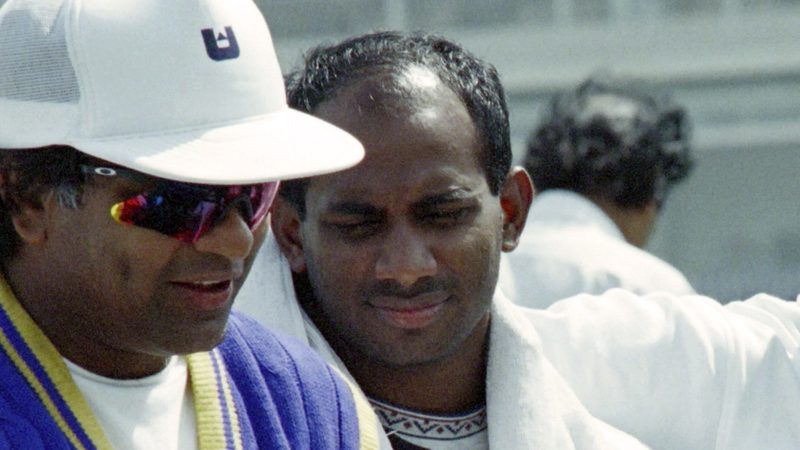
While the return of cricket is much awaited, many fans will be looking forward to watching the might of Jonny Bairstow and Jason Roy playing for England, before Rohit Sharma and Shikhar Dhawan unleash fireworks when India visit Australia. However, much of their prowess while opening the batting can be attributed to one particular skill, for which they have only one person to thank – Sanath Jayasuriya.
Having made his One Day International (ODI) debut against Australia, the former Sri Lankan legend flittered in the middle and lower order of the batting lineup. He was used more as an all-rounder courtesy his left-arm orthodox spin, and till 1993, his highest ODI score was an unbeaten 34.
Meanwhile, the International Cricket Council (ICC) brought in new fielding restrictions in 1992, and the first to utilise its advantages was New Zealand’s Mark Greatbatch. The Kiwi batsman took his opposition to the cleaners, producing some magical shots that baffled bowlers. However, this wasn’t enough to convince other teams of the advantages of pinch-hitting during the powerplay. This was done by Sri Lanka during the 1996 World Cup.
An unassuming Jayasuriya unleashes fire
The island nation of Sri Lanka was not among the favourites to win the World Cup in 1996, yet they went on to prove their doubters wrong. Along with Romesh Kaluwitharana as his opening partner, Sanath Jayasuriya took Greatbatch’s cue and unleashed fire on the opponent batsmen. The Lankans had previously been unable to go past the preliminary stages of the competition, and hence this accomplishment drew applauds from many players and legends alike.
Although Jayasuriya only managed to score 221 runs through the tournament, where Sachin Tendulkar finished as top-scorer at 523 runs, Jayasuriya was involved in many an important innings for his country. He hit a quickfire 79 to beat India by six wickets in New Delhi, while 82 off 44 balls helped them win over England.
How Jayasuriya turned the tide
Moreover, the most important thing that Jayasuriya did was prove the efficiency of pinch-hitting during the powerplay, which was somewhat of a taboo prior to the 1996 World Cup. Earlier, the power-hitters would be saved for the death overs, but Jayasuriya turned the tides.
His powerful displays set the stage for Sri Lanka’s middle order, with the likes of Aravinda de Silva, Asanka Gurusinha and skipper Arjuna Ranatunga taking over the middle order while leading their side to the ultimate trophy. During the powerplay, Sri Lanka managed 117 against India, 123 versus Kenya and 121 against England in the quarter-finals. This ability also ensured that Jayasuriya maintained a strong strike rate of almost 131.54 through the tournament.
Since his time, many openers, such as David Warner Adam Gilchrist, to name a few, have adopted this style of play, paying huge dividends. By the time Jayasuriya retired in 2011, he amassed a strike-rate of almost 92, making him one of the most influential players in the development of ODI cricket as we know it. His prowess with the bat is clear when Glenn McGrath named Sanath Jayasuriya as the most difficult batsmen he has faced, attesting to the might wielded by the Sri Lankan’s bat.
Feature image courtesy: AFP / Saeed Khan
Disclaimer: The views and opinions expressed in this article are those of the author's and do not necessarily reflect the official policy or position of SportsAdda.



























